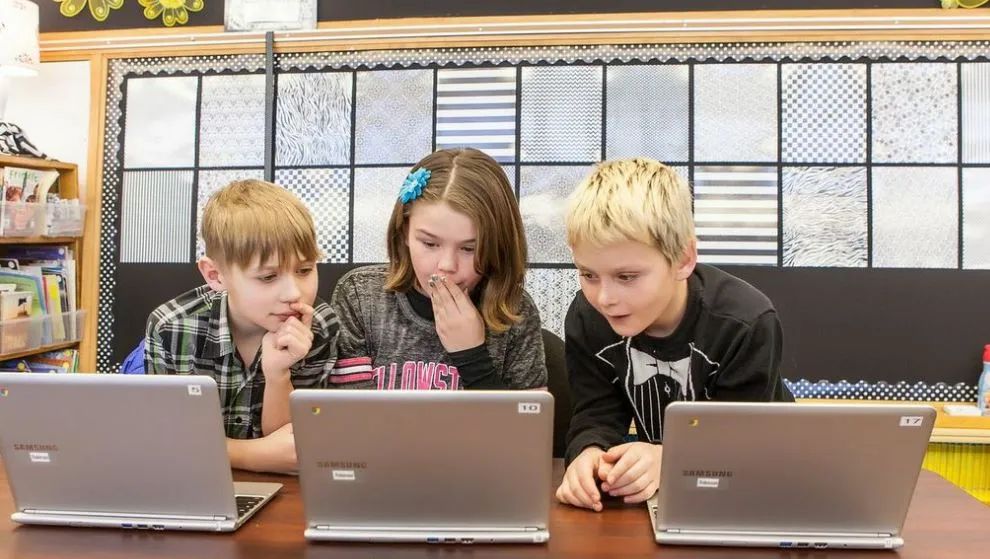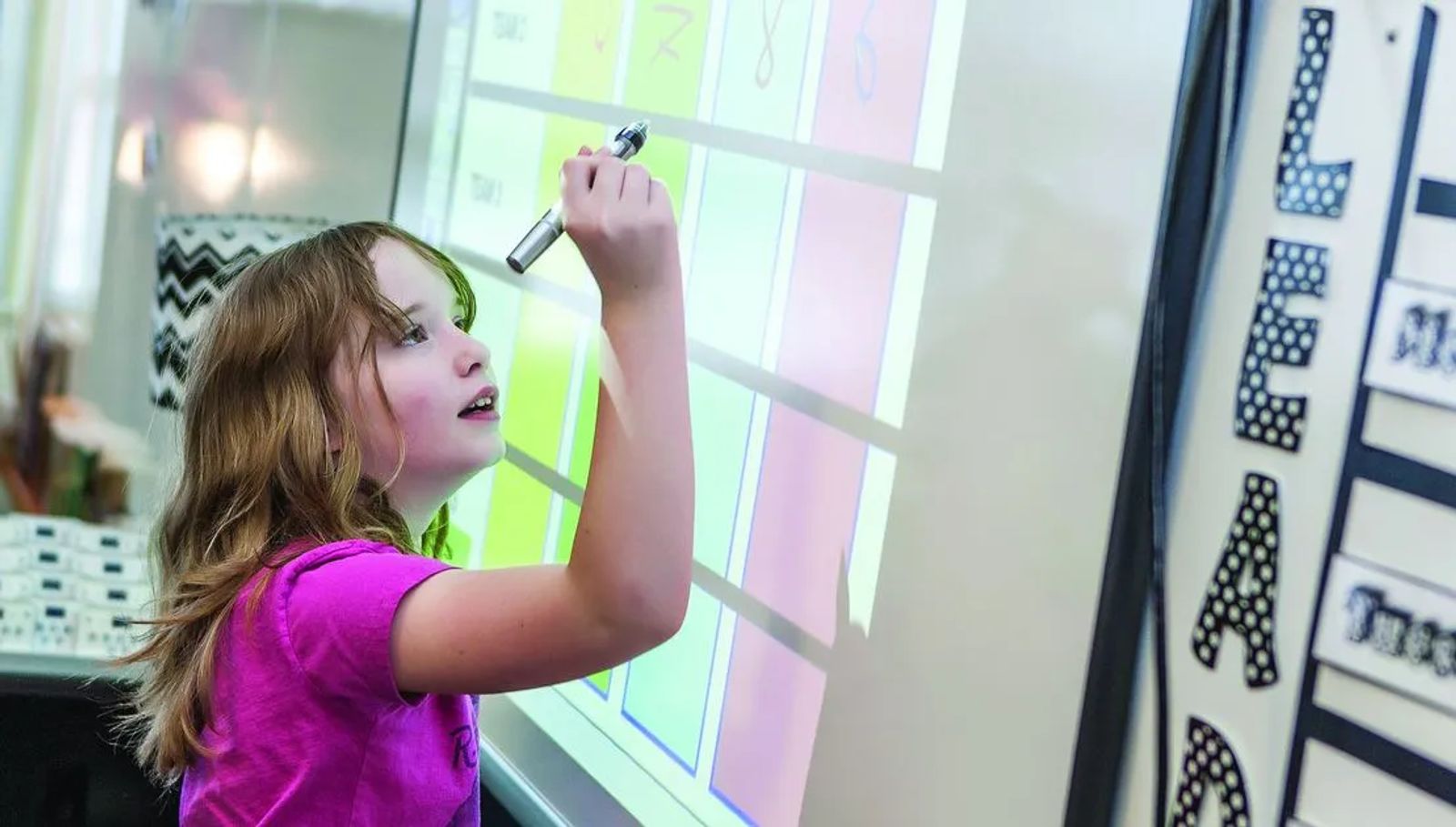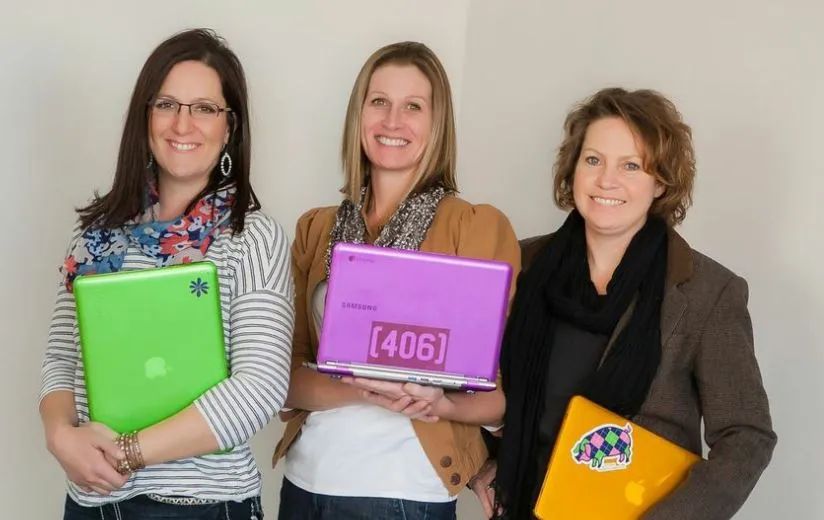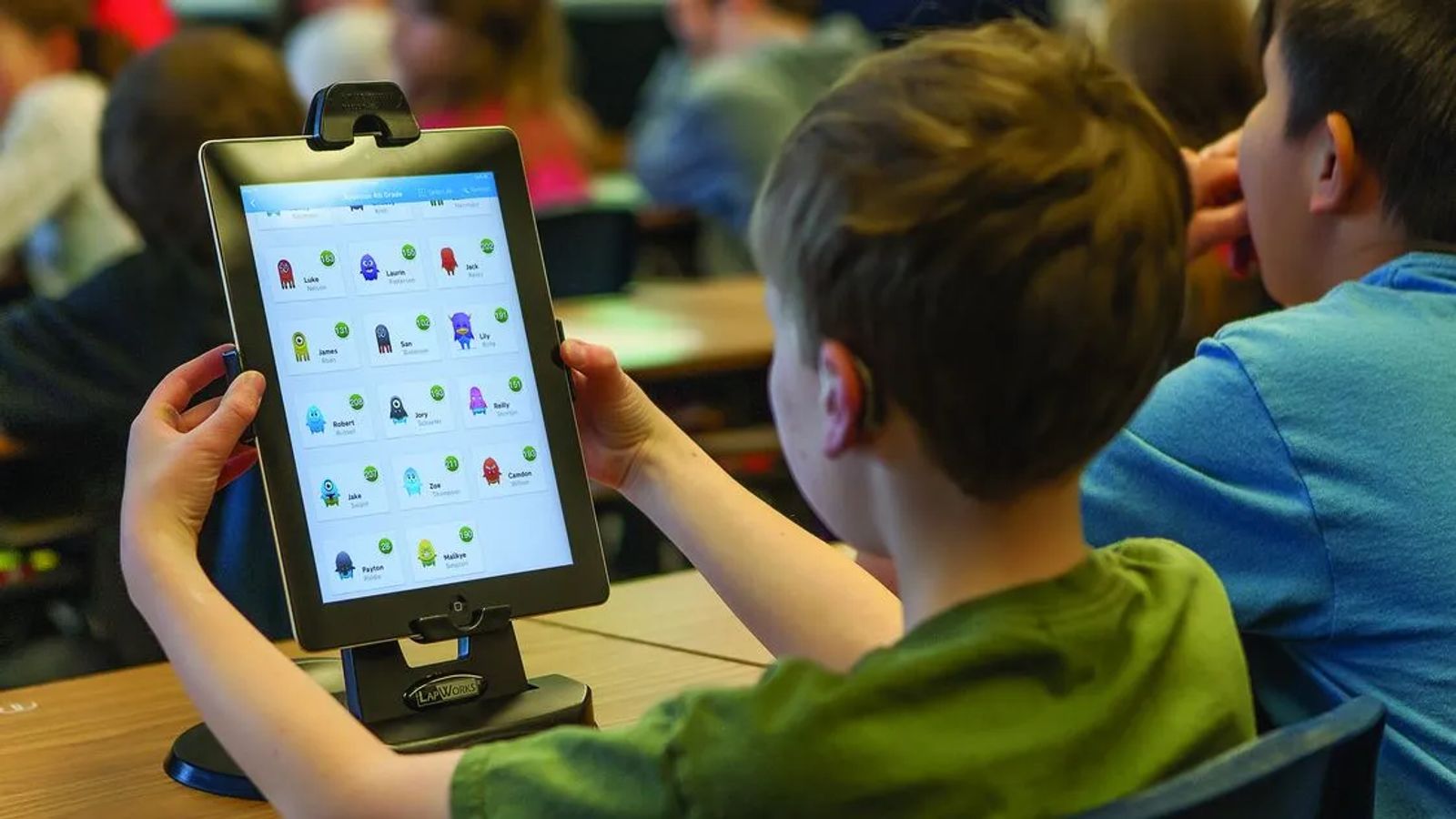
The Connected Classroom
Mill Levy dollars go to work for School District 2
Walking into Tawna Robinson's class at Poly Drive Elementary School, you could hear a pin drop. It's not because these fourth graders are asleep at their desks as their teacher goes over the day's lesson. It's because they are standing at the ready with their Chromebooks open and their remote control clickers in hand, waiting to answer the next math question. Gone are the days when a child takes pencil to paper to scratch out a division problem or scribble out a fraction. If you ask leaders with School District 2, this is the classroom of the 21st century.
"We only use pencils and paper to take attendance," laughs Lainey Kitzmann, one of Robinson's students. "You can write with the pen on the Smart Board!" She says with excitement.
What's a Smart Board you ask? It's an interactive whiteboard system that allows a kind of all-in-one collaboration. Teachers can use interactive software so that each and every student can be engaged in answering problems as a team. When they have an answer, they touch their "pen" to the board, or answer via their remote clicker, which will let them know if they answered correctly.
"You can have it bigger on the screen and the whole class can do the problem with you, working as partners and trying to figure it out," Lainey shares. "If you get it wrong, they can help you and correct you to help you get better."
The Smart Boards a.k.a. interactive projectors, Chromebooks, iPads, printers, software and computers come thanks to the Elementary Technology Mill Levy that voters passed last spring. Knowing that this technology wasn't in the general fund budget, administrators and community members made a pitch to the public to pass a 1.2 mill levy for its 22 elementary and four middle schools. The measure passed handily. The fact that voters approved a levy that never "sunsets" surprised even the school district's superintendent.

"That is what is amazing to me. I came from a state where there was no such thing as a continuous levy or bond. I have to thank our public for understanding that we needed to pass this levy and that it really will benefit our kids in the future and in the next generation," says Superintendent Terry Bouck.
"I will have a lot more experience," 10-year-old Lainey says with a smile. "Whatever I want to be when I grow up, I will have that background knowledge!" Her fellow classmate, James Roan chimes in, "Last year, we barely got to use any technology. This year, we use technology every single day. I like that! I like finding out new ways to use it." Technology Integration Specialist Ann Brucker smirks when she hears this student's words because she's seen James in action. "He's usually the first to figure things out!" She adds that this is just what she hopes for every student in the district. "I think it takes a lot of problem solving and a lot of forethought, which are skills that we want our kids to have when they are adults."
Thanks to the levy, a district that once housed computers which were, on average, more than five years old now has a growing number of classrooms with a one-to-one ratio between kids and high tech devices. In Robinson's classroom, each and every student has his or her own Chromebook. Bouck says it's just one step to make sure students are ready for the jobs of tomorrow. He laughs when he says, "I am old. I go back to the days when we had typewriters and tape recorders. Now the kids really will, from year to year, be able to update their equipment and knowledge of what is on the cutting edge. Our kids really can take advantage of what is offered to them in terms of jobs and occupations. It is going to be amazing for our students."
BELOW: Ann Brucker, Shelly Stanton and Desiree Caskey - Billings School District 2 Technology Integration Specialists

Ann Brucker and her fellow Technology Integration Specialists, Shelly Stanton and Desiree Caskey know just how amazing it is. These three women are charged with taking this brand new technology and integrating it fully into the classroom. They arm the teachers with lesson plans and visit the classroom to coach teachers in a hands on way. They have their book bags on wheels stuffed with tools for teachers. Each and every day they are in front of a new classroom integrating technology into everyday lessons.
While Ann Brucker truly enjoyed heading up a classroom of her own last year at Burlington Elementary, she knows that getting in front of new teachers every day creates an educational snowball effect. She says with passion, "If I can take what I just did for those 24 kids and do it for one teacher who has her own 24 kids and another teacher who has her 24 kids? Now I have just multiplied the effect I can have on somebody." Ann, Shelly and Desiree have been going great guns since the new technology arrived last October and their schedules show no sign of easing up.
Desiree Caskey was the district's first Technology Integration Specialist. She took the job seven years ago. She says now that she has two partners on the job, it's only a matter of time before each and every classroom is light years ahead in how it teaches. She says, "There are 1500 staff members in our district. When you have people like Ann Brucker who go into a classroom and model how to teach a lesson in a way that encompasses that technology, it makes the lesson way more enhanced. The engagement with students is huge."
Both Ann and Shelly landed the new jobs because they took an interest in what's known as TILT, Teachers Integrating and Learning Technology. To be a member of this group, you have to commit to continuing education for three years and once you have a lesson down, you need to make an effort to integrate it with other teachers in the school where you teach. This group has been so successful, they've even helped form similar groups for teachers in Iowa and Massachusetts.
Desiree laughs when she thinks about how far this group has come. "I can tell you the goals of those teachers when we first started was to use their computer with a projector. The internet was around and we had a network but there wasn't really that huge collection of educational tools." She is quick to add, "Today, we are having teachers learn how to do collaborative video conferencing. They are actually sharing documents and collaborating on projects while they are video conferencing with people in other countries." And, the teachers have an entire suite of tools thanks to Google Apps for Education. Shelly Stanton says simply, "It is opening all sorts of doors for these kids."
To take these lessons one step further, the district decided to host its first ever "Hour of Code" event last fall. There were fifty slots for kids, which filled up very quickly. The idea was a hands on, voluntary lesson that gave children their first taste of working with computer code. Ann says, "We thought, wouldn't it be cool if we had an event where the kids could come and meet some people who actually do coding for a living and try writing some code of their own. Potentially, down the road, some of those jobs are jobs these kids might want to do later on in life." Ann adds that seeing these children excited about learning "a whole new language" gives her a charge. "Holy cow, think of a 9 or 10-year-old being able to write code? What is that going to morph into when they are 29?"
With the technology mill levy in place and technology trickling in to elementary buildings citywide, Ann, Shelly and Desiree know the key will be helping the district stay on the cutting edge. These three know that the high tech world is constantly evolving, oftentimes faster than many of us would like to admit.
"I feel it is our responsibility as teachers to get those kids ready for some kind of crazy future that we don't even understand yet," Ann says. "If they don't have the skills, they can't compete."
FOR MORE ON WAYS TO BRING TECHNOLOGY HOME WITH LEARNING, CLICK HERE!









